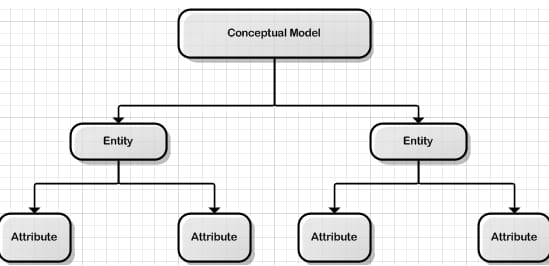Introduction
Data analysis and design help create a foundation for the purpose of delivering a BI application (Jonathan, 2008). By conducting data analysis, the business need for data and information can be understood. Likewise, by using a design approach, business information needs can be converted into a data structure that is extensible and adaptable. This report will provide a detailed description of concepts that are associated with data models and database technologies.
Task 1
1.1 Critically Comparing Different Data Models and Schemas
A comparison has been drawn between different data models and schemas, which are depicted in the below-given table:
A data model arranges data elements and forms relationships between them. This model is used by the organisation with the aim of managing all its information. It is the blueprint of the data structure, which basically represents the logic of the entire database.
| DATA MODEL | DATA SCHEMAS |
| A data model arranges data elements and forms relationships between them. This model is used by the organisation with the aim of managing all its information. | It is the blueprint of the data structure, which basically represents the logic of the entire database. |
| It is the high-level design implementation that helps in making the data that can be presented in schemas (Difference between database models and schemas, 2015). | However, in comparison to these data schemas, they provide specifications regarding the field as well as its type that will be presented in the database. |
| It formulates the overall structure of data, which can be relational, where whole data are arranged in a set of tables. | Schemas isolate both users and database object owners. However, with respect to relational models, schemas would be sets of attributes. |
| The data model is of three types, such as the logical data model, the conceptual data model, the physical data model, etc. | Physical and logical database schemas are being regarded as two basic types of data schemas. |
| In order to formulate a suitable design database, the designer has to cover all the data aspects. Designers face complexity in the process when the design of data moves from a conceptual data model to a physical one (Collins, Buhalis, and Peters, 2003). | Data schemas give a thorough description of entities and the relationships that exist between them. By using this, database designers provide help to programmers, thereby raising their understanding of all the aspects. |
In order to clarify the difference between different data models, the following table is formulated:
Aspects Conceptual data model, logical data model, physical data model
| Aspects | Conceptual data model | Logical data model | Physical data model |
| Entity name | Defined | Defined | |
| Entity relationships | Defined | Defined | |
| Attributes | Defined | ||
| Primary Keys | Defined | Defined | |
| Foreign Keys | Defined | Defined | |
| Table Names | Defined |
1.2 Critically Discussing the Benefits and Limitations of Varied Database Technologies
Following are the benefits and limitations of varied database technologies:
Entity relationship model
It is being regarded as a type of database technology. This model is a graphical representation of a system that shows the relationships that exist between people, processes, places, and events that work within the system. This model is used as the foundation of a statistical relational database.
Benefit
- It represents relationships between entities straightforwardly.
- This model is flexible as it easily converts itself into a hierarchical and network data model (Singh, 2011).
Limitation
- This model is useful when high-level design is performed.
- There is no industry standard notation with the aim of carrying out the development of the entity relationship model.
Data flow diagram
It is the graphical representation of the flow of data using an information system. A data flow diagram is the starting stage for creating an overview of the whole system. This database technology is also used for visualising data processing. This diagram provides a description of the information that will be inputted and outputted from and within the system.
Benefit
- It assists in describing the boundary for the whole system.
- It is an easily recognisable approach as it uses straightforward graphical techniques.
- This technique can be easily understood by both technical and non-technical audiences.
Limitation
- This diagram lacks physical consideration (Rosenblatt and Shelly, 2011).
- It is a very time-consuming approach.
1.3 Analysing Varied Approaches to Database Design
Top-down and bottom-up are being regarded as two basic types of approaches that are used with the aim of designing the database. Both approaches work towards a common goal, such as uniting the system by clarifying the relationship that exists between data. The structure of the firm is affected by different types of factors, such as the scope and size of the enterprise.
Top-down database design starts with the general approach and gradually moves on to the specific approach. On the other hand, it can also be said that in the given form of designing, the designer will form a general idea about the data that is needed in the system. After that, the designer will move on to more specific details, which basically define how the system will interact (Wasson, 2006). Thus, in the given process, the designer will basically identify varied entity types, and after that, it will give definitions regarding each entity's attributes. It is the most effective way of designing data, as it splits a large team into several subsystems. Furthermore, it uses encapsulation with the aim of encouraging object-oriented programming.

Besides this, bottom-up is another type of database design approach. This form of database design begins with a specific approach and gradually moves on to a general approach. Here, in the given form of designing a system, the analyst will conduct an inspection in which it inspects all the interfaces that the database possesses. Here, the analyst works backwardly through the system, where it analyses what data should be stored in the database. In addition to this, in the given model, at first the designer will identify the data elements, and then it will group them together in the form of data sets (Collins, Buhalis, and Peters, 2003). In the given type of system, the team can perform the code functioning of the subsystem in a very fast manner. Both of these approaches are popular forms of data design. However, there are some companies that use centralised and decentralised forms in order to design their data in an effective manner.
Conclusion
It can be concluded that, by carrying out the comparison between different data models and schemas, the selection of the best approach will be carried out by the manager of the firm. In addition to this, by selecting a suitable database design, a proper arrangement of the firm's data can be made.
Need to Consult Directly With Our Experts?
Contact UsReferences
- Difference between database models and schemas. 2015. [online]. Available through: https://stackoverflow.com/questions/25093452/difference-between-data-model-and-database-schema-in-dbms. [Accessed on October 8, 2015].
- Jonathan, F., 2008. The UK's faster payment project: avoiding a bonanza for cybercrime fraudsters. Journal of Financial Crime, 15 (2), pp. 155-164.
- Rosenblatt, J. H., and Shelly, B. G., 2011. Systems Analysis and Design. Cengage Learning.
- Singh, K. S., 2011. Database Systems: Concepts, Design, and Applications. Pearson Education India.
- Wasson, S. C., 2006. System Analysis, Design, and Development: Concepts, Principles, and Practices. John Wiley & Sons.



 Company
Company



















